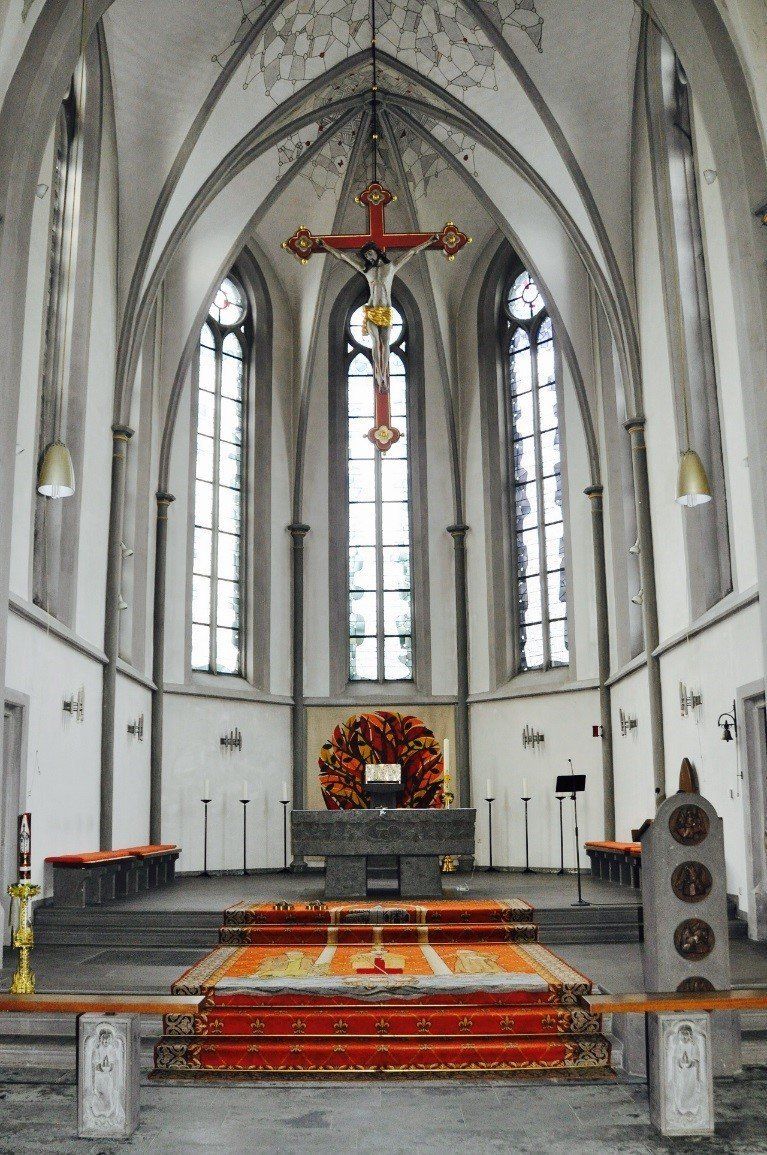Supporters Association of the Catholic
Parish of St. Nicholas
Kottenheim e. V.
Supporters Association

Our concern
The association supports the parish of St. Nicholas in Kottenheim in fulfilling its social and pastoral tasks and contributes to the preservation, equipment and maintenance of the parish church of St. Nicholas. The association also supports and promotes the development of sources and documents for research into the parish church and the history of the parish, including the publication of relevant publications.
Photo: Frank Heuft
board
The board of the association consists of the chairman, the deputy chairman, the treasurer and two assessors. The board currently consists of:
- Dr. Alexander Saftig (1st Chairman)
- Karl-Heinz Hannus (2nd Chairman)
- Brigitta May (cashier)
- Karl Heinz Breidbach (assessor)
- Frank Heuft (assessor)

membership
By becoming a member you support the association's cause. The association is also entitled to issue donation receipts for donations made to support church purposes.
Bank details:
Mayen District Savings Bank
IBAN: DE08 5765 0010 0098 0510 14
Volksbank RheinAhrEifel
IBAN: DE02 5776 1591 0111 2223 00
Photo: Frank Heuft
St. Nicholas Kottenheim

Story
The discovery of a bowl with two Christian symbols, three crosses and a fish, indicates that Christianity had reached Kottenheim by the end of the 3rd century. Kottenheim was first mentioned in a document in 1008 in a donation from Archbishop Megingaud [1008-1015].
Clergy in Kottenheim
In 1330, Kottenheim was first mentioned as a parish of the rural chapter of Ochtendung in the diocese of Trier. Between 1802 and 1824, the parish belonged to the diocese of Aachen for a time. Since 1827, it has belonged to the deanery of Mayen and since 2004 to the deanery of Mayen-Mendig. Konrad is recorded as the first clergyman in Kottenheim in 1327.
Fig.: Plan of Kottenheim 1824
Construction history
It is not known when and how often it was built. The first church is believed to have been built in 1330, and further buildings are believed to have been built in 1406 and 1519. The tower was built in 1772.
The old church was closed in 1853 because it had become dilapidated and was completely demolished except for the tower. According to the plans of the architect Vincenz Statz (1819-1898), a three-aisled neo-Gothic basilica was built in 1854, based on the forms of the Cologne Minorite Church. On September 24, 1857, the consecration took place by the Bishop of Trier, Wilhelm Arnoldi [1842-1864].
The church tower was extended in 1904 according to plans by the Kottenheim-born architect Caspar Clemens Pickel (1847-1939).
In the years 1959-1961 the Church underwent a comprehensive redesign.
The old church was closed in 1853 because it had become dilapidated and was completely demolished except for the tower. According to the plans of the architect Vincenz Statz (1819-1898), a three-aisled neo-Gothic basilica was built in 1854, based on the forms of the Cologne Minorite Church. On September 24, 1857, the consecration took place by the Bishop of Trier, Wilhelm Arnoldi [1842-1864].
The church tower was extended in 1904 according to plans by the Kottenheim-born architect Caspar Clemens Pickel (1847-1939).
In the years 1959-1961 the Church underwent a comprehensive redesign.
Photo: Claudius Engelhardt
Epitaph
The epitaph (memorial) dates from 1539, is made of tuff stone and depicts life-size, armoured and wearing a helmet, the Junker Konrad Schilling von Lahnstein, holding a rosary in his folded hands. The architectural frame is made up of balusters lined up next to one another. In the corners are the coats of arms of the noble families Schilling von Lahnstein (top left), von Kottenheim (right), von der Leyen (bottom left) and von Riedt (right).
The inscription reads: IN THE YEAR OF OUR LORD 1539 ON THE EIGHTH DAY OF MARCH THE NOBLE AND STRENGTH IONECKER CONRAD SCHILLINCK VAN LAINSTEIN DIED, GOD'S GRACE AMEN.
The inscription reads: IN THE YEAR OF OUR LORD 1539 ON THE EIGHTH DAY OF MARCH THE NOBLE AND STRENGTH IONECKER CONRAD SCHILLINCK VAN LAINSTEIN DIED, GOD'S GRACE AMEN.
Photo: Guido Walter
Memorial Chapel
The memorial chapel was built in 1922 according to plans by the Kottenheim-born government and building councillor Nikolaus Pickel (1854-1926) in Romanesque style and was consecrated on Easter Sunday 1924.
The chapel commemorates those who died in both world wars, the murdered members of the Jewish families Gottschalk and Levy from Kottenheim, as well as the pastor Wilhelm Caroli (1895-1942), who died in the Dachau concentration camp.
Photo: Claudius Engelhardt

Bornhofenwallfahrt
The first pilgrimage from Kottenheim to the image of the Virgin Mary in Bornhofen (today: Kamp-Bornhofen) was first mentioned in 1695. Since 1834, pilgrims from Kottenheim have set out every year on September 7th. The procession is led by four brother masters, each of whom serves four years. The approximately 40-kilometer-long walk leads via Polch, Kalt, Alken and Pfaffenheck to Boppard. From there, the pilgrims take a boat to Bornhofen. The return journey takes place on September 8th in the late afternoon by bus. The pilgrimage ends with a service in the parish church in Kottenheim.
List of Brother Masters
Bibliography
Photo: Marian Brotherhood Kottenheim











